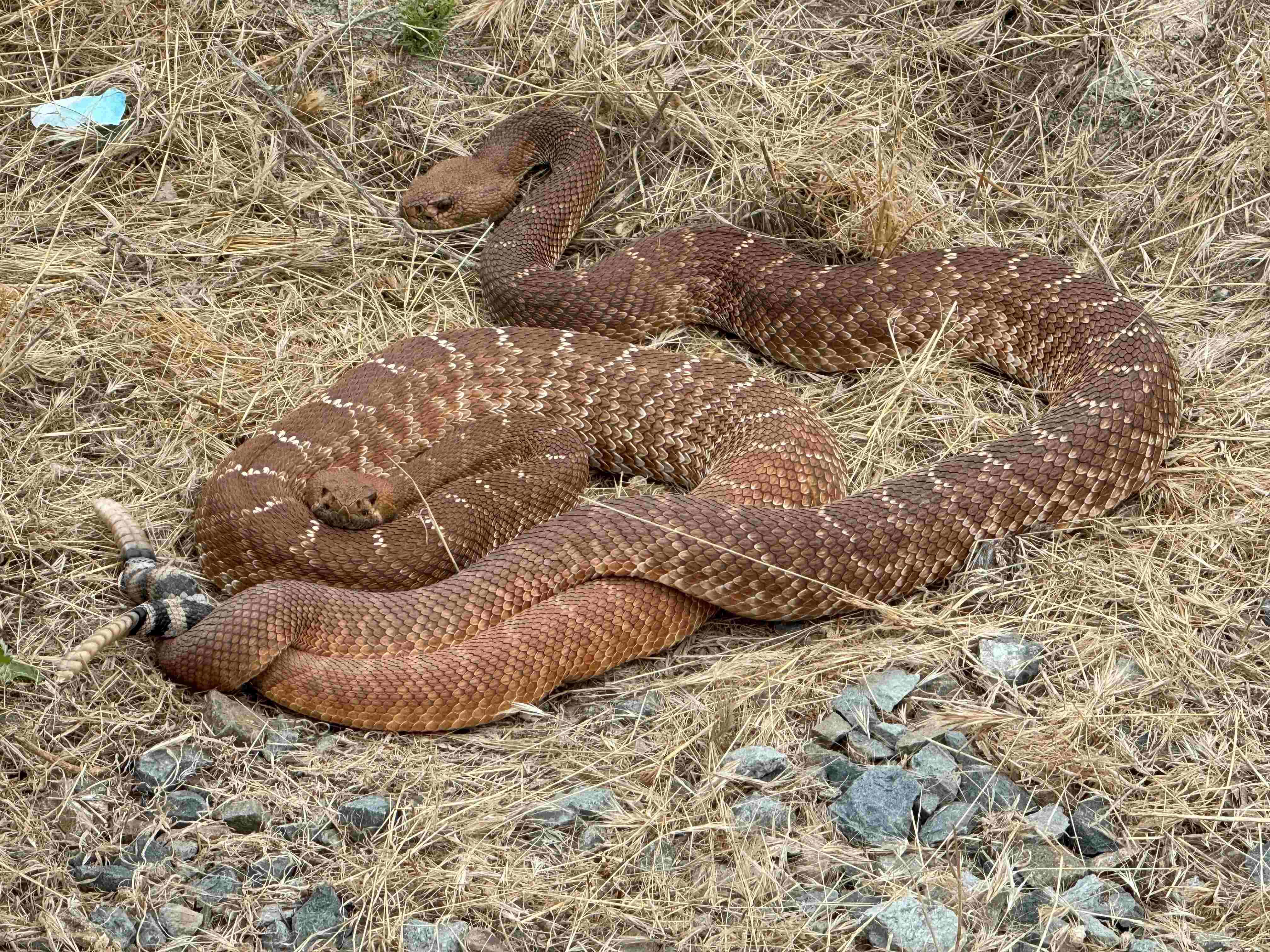
Species Spotlight: Red Diamond Rattlesnake (Crotalus ruber)
The red diamond rattlesnake (Crotalus ruber) is a State-listed Species of Special Concern found in southwestern California, from the Morongo Valley west to the coast and south along the peninsular ranges to mid Baja California. This long, heavy-bodied pit viper ranges from 30 to 65 inches in length and has a thin neck, a large triangular head, and a rattle on the end of the tail consisting of loose interlocking hollow segments. Red diamond rattlesnakes are pink, reddish-tan, reddish-brown, or brick red in overall color with diamond-shaped blotches, usually with light edges, marking the back and black and white rings, similar in width, circling the tail just before the rattle. When alarmed, a rattlesnake shakes its tail back and forth causing the rattle segments to rapidly rub together and produce a buzzing sound to serve as a warning. Although rattlesnakes are born with a single button at the end of the tail that does not make a sound, a new rattle segment will be added each time the snake sheds its skin, which can occur multiple times per year.
Red diamond rattlesnakes inhabit arid scrub, coastal chaparral, oak and pine woodlands, rocky grasslands, and cultivated areas, and most commonly occur in habitats within heavy brush, large rocks, and boulders that provide cover. The species is active from Spring to Fall with the period of greatest activity being from March to June. Earlier in the year, the species is active during the day when temperatures are moderate but retreats into rodent burrows and under rocks during periods of excessive daytime heat and becomes more active later in the evening and eventually nocturnal. Mating typically occurs in March and April and concludes with the female giving live birth to 3 to 20 young July through September.
Food sources include most small mammals such as ground squirrels, wood rats, and rabbits, as well as amphibians, lizards, birds, and other snakes. Prey is found when actively moving or by ambush while waiting nearing lizard or rodent trails. They are referred to as “pit vipers” due to the presence of pits on the side of the head above the mouth that are used to sense heat and hunt warm-blooded prey. Two large hollow movable fangs are located at the front of the upper jaw and are folded backwards when not used. These fangs are connected to venom glands so that when the snake bites, the fangs swing forward rapidly to stab and inject a toxic venom that quickly immobilizes their prey allowing the snake to swallow it whole. Common predators of rattlesnakes include red-tailed hawks (Buteo jamaicensis), badgers (Taxidea taxus), roadrunners (Geococcyx californianus), coyotes (Canis latrans), California kingsnakes (Lampropeltis californiae), and domestic cats (Felis catus) and dogs (Canis familiaris).
As part of the monitoring program, The Nature Reserve has been conducting annual surveys to monitor the extent and general health of existing populations, identify potential stressors (e.g., urban-related predators, roads, trails, human harassment), and implement appropriate management actions to enhance, restore, and maintain coastal sage scrub, chaparral, and grassland habitats within the HCP Planning Area. Ultimately, a total of 23,111 acres of habitat for the red diamond rattlesnake would be conserved and managed in perpetuity in The Nature Reserve.
